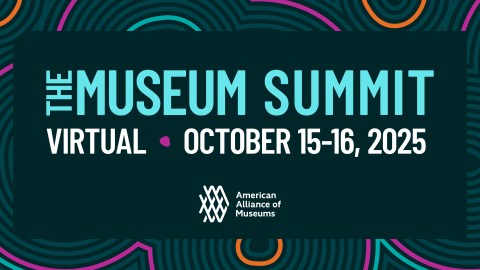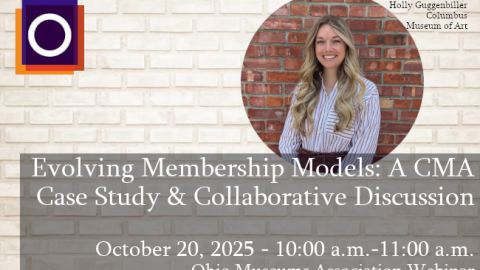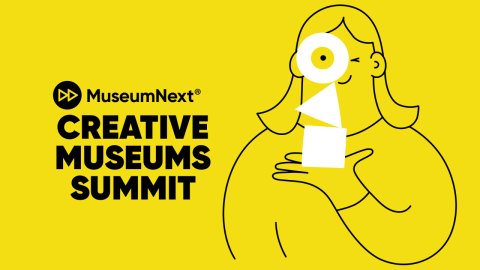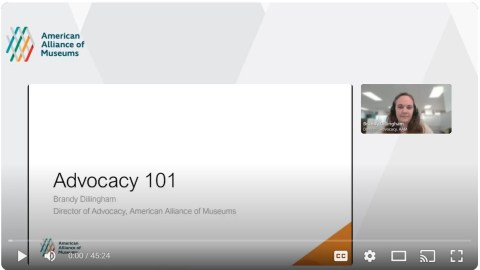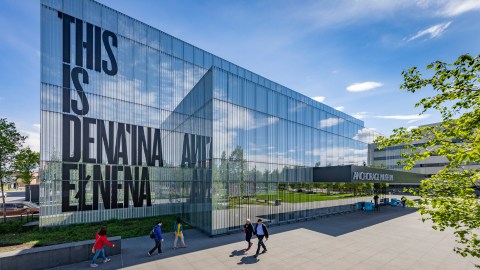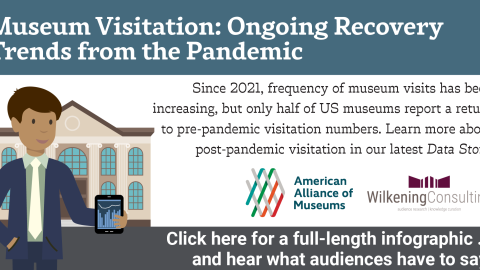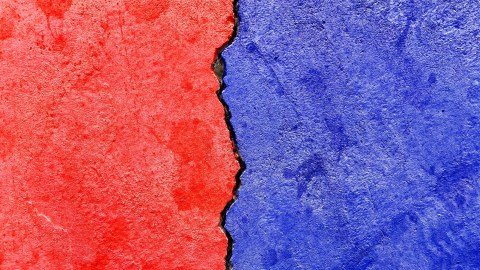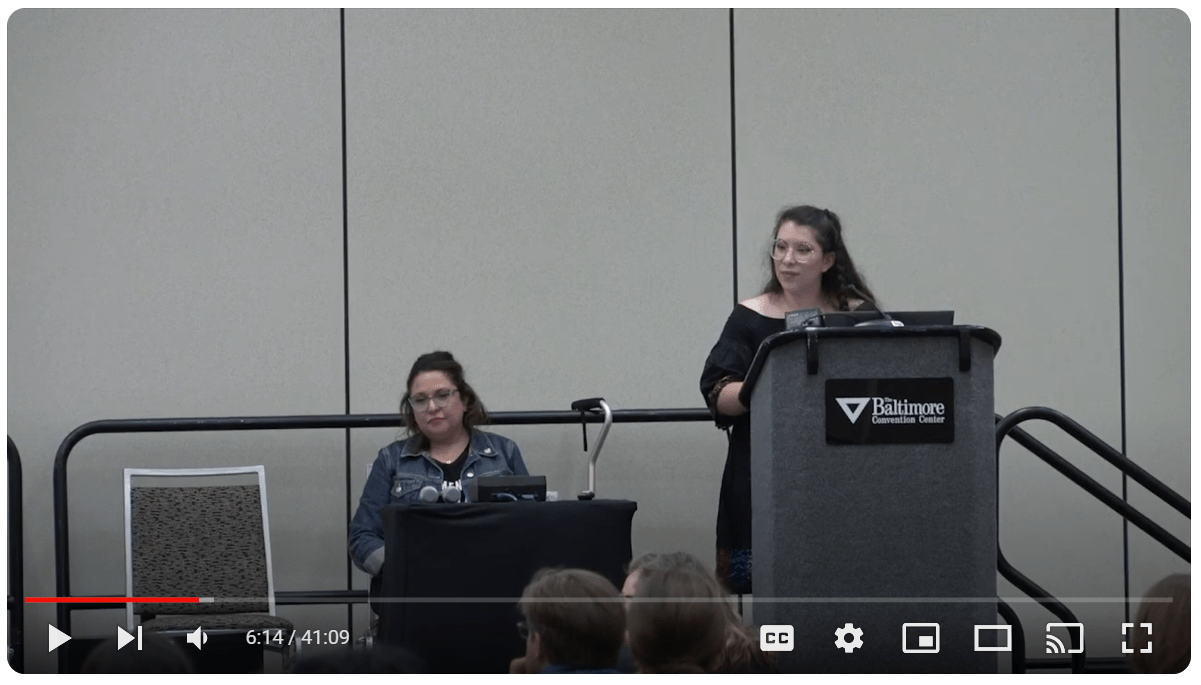
This is a recorded session from the 2024 AAM Annual Meeting & MuseumExpo. Museums have been guilty of discounting oral histories as “non-academic” or “inappropriate” methods of historical documentation – a trend that contributes to the erasure of Latinx and BIPOC stories and culture. Through a series of case studies from institutions doing exciting and effective work with oral history, this recorded session explores how to engage community members in oral history projects, advocate for the importance of this work in museums, and share research on how the inclusion and prioritization of oral histories in museums can impact the relationships between the museum and its community and staff members of color.
Transcript
Sehila Mota Casper:
And we started out as a very, very grassroots organization in 2014. We were a lot of museum professionals, curators, academics, historic preservationists, anyone in the heritage field. And realized that when we would go of conferences, there really wasn’t sessions solely dedicated to Latinx history or heritage.
So, we just came together trying to support one another within our work. And we became a 501 (c)(3) three years ago and have staff now. So, we’re very excited that a lot of the work that we’ve been putting into this over the last 10 years is finally coming into fruition. So that’s what we’re going to share with you day. We are a national organization. We focus on places, stories, and cultural heritage in the United States. And I will say that our work centers on racial and social justice for inclusion. And I will pass it on to Asami.
Asami Robledo-Allen Yamamoto:
Sorry for the random caps. That did not look like that on Canva. So, this is a quote from Michelle Obama on the dedication day of the Whitney Museum of Art new building. It’s no secret that museums have a history of excluding stories and representation of marginalized identity groups like people of color, disabled people, the LGBTQ + community, and so many other identities. Traditionally museums have prioritized the white male abled body lens and that is often the art that that hangs in the walls, the histories told in the exhibition, and the perspectives shared throughout the one’s museum experience.
While the needle is moving slowly, museums are often instituting change and diversifying their collection and approaches to museums, but a lot of this work is internal. So once again, community is being left out and not really seeing all the very important change that’s happening inside.
So, our presentation is going to focus on oral histories and how conducting oral histories and integrating them into exhibitions and galleries can help amplify community voices and transcend the boundaries of traditional community involvement.
There’s a lot of research that has been published and being expanded on that explores the impact that belonging has on human development, societal relationships, and challenging stereotypes and narratives. All histories can promote belonging in museums. So, on the next slide I have to do my museum educator hat. I’m gonna show you a work of art with the museum label next to it. So, we’re gonna sit with it for, I don’t know, a minute. And then I’m gonna challenge you to act like this work of art is in a gallery, not on a projection screen, you’re walking through the Smithsonian.
And this painting is called Braceros. Does anyone know what a Bracero is? Okay, we have some folks that are saying, yeah. So, a Bracero is a person that they were a Mexican — it was part of a Mexican labor program in the 1940s to 1964. So I’m just going to leave you with that information.
I’m sure y ‘all know this, but the average person only spends 22 seconds per work of art in a museum, so I know that this minute is feeling like 10.
Okay, so now I’m going to do something a little different. I’m going to interrupt the presentation for a second and I’m going to play a little fragment of an oral history. Now, I want to recognize that this– I wanted to find an oral history of a Bracero. Now, so many of these aren’t Spanish. So, in terms of language equity, I wanted to share one that’s in English. But if anybody wants to hear a Spanish one, you can come up after, or I can play both of them, either way.
Maybe I’m gonna play it.
– ‘Cause we’ve had Brassettos there.
– I see, so one that they would come in, you would be at your little, by your machine or let’s say by your station ride and then they would—
– They would bring ’em on in and shoot ’em through and in fact, I think we would X-Ram, check ’em and then they went and shouted, because I remember that now, that you had your hands were just completely dirty, dirty, dirty, you know. And smell, man, when those poor guys got off those boxcars and those cattle cars, poor guys. I mean, it was…
– I know I talked to a woman who was, she was a clerk typist, which I think I believe would have been across the compound from where you where you all were. And she said she almost fainted once from one of the first times she was there, and they would line up in front of her and she said it wasn’t necessarily their fault because they hadn’t had a chance to.
– And they were jammed. We went down and literally we would open sometimes, open those boxcars and let them come out. God, I mean they were. How they survived, how They survived coming up, you know, and I you know a lot of people used to criticize Us over here how we treated them what I said.
Okay?
If anybody is feeling like they have the emotional and brave capacity does anybody want to share how? Listening to the oral history while looking at this work of art made you feel It’s okay if you don’t
Yeah Yeah that it’s allowed me to connect with our telling story that maybe within that context. Thank you so much for sharing. Yeah.
It just sort of gives a sense of the reality of the experience.
>> Yeah. Thank you! So much for sharing.
>> Oh, I see one more in the back. Awesome.
Okay, yeah, go ahead.
>> Especially having — with multiple faces emphasizes the–
Thank you. So, it sounds like, in general, we kind of had a good feeling about integrating these oral histories.
Now, I’m going to pass it off to Ms. Sehila.
Sehila Mota Casper:
Yeah, just to support on this and work a little bit further on this. I’d like to share a video clip that was put together by one of our dear partners, University of Texas, at El Paso, the Oral Histories and Borderlands Department. Over the last nine years, I’ve partnered with them to help conduct oral histories, document Braceros stories, because we just helped save, and we just designated Briovista Farm, which is a Braceros site, as a national historic landmark. Last week we did the unveiling, it was pretty exciting. So, they put this together for a Bracero History Summit that I organized and again just think about that artwork and context and here you will listen to three Braceros and it is in Spanish. We have closed captions at the bottom, and I had no control about how big it could be so If you wanted this, I could email it to you also following today’s talk.
Here we go. So, this is an oral history taken from the Bracero History Archive that Asami just showed. This is Juan Rosa. And these three gentlemen actually received their contracts at Rio Vista Farm outside of El Paso, and they’re going to share their experience in receiving their contract and also the interview process but also being out in the fields.
“If I could work in Mexico, I could work in the United States.”
Y ‘all, thank you for your patience.
I think I’d be better off with the clicky thing instead of trying to use the PC.
Okay, here we go.
“Al economía y a la vida de esta nación. Mis expectativas solamente eran de que si yo podía trabajar en México, yo podía trabajar en Estados Unidos y que de allí yo podría darle una mejor vida a mis hermanos, a mi madre. Cuando entré de Brasero estaba allá en mi pueblo y no vine a Chihuahua porque ahí estaban contratando, ahí en Chihuahua porque caerán miles de braseros y ahí no reunieron, era cantidad de gente, en aquel tiempo era la oportunidad para que la gente viniera del sur de México a Tratarse para Brasero. Miren, la batalla empezó en Chihuahua.
Allí en Chihuahua agarraban, había una estación, que le decía, una estación vieja de tren. Era muy amplio ahí el terreno, estaba fuera del pueblo, en Chihuahua. Y no había sanitarios. Ahí pasaba un río. y ahí iban a hacer sus necesidades, hí íbannos, y allá toquemos mucha gente, total es que ahí empezaba la batalla.
Había una oficina fuera de Shubahua y allá tenía uno hacia línea, todo un día, como la primera vez fue muy duro, como yo creo que más de mes, durmiendo en un cartón en la banqueta, cuando ya me contraté y llegué ahí con los americanos, yo lo vi de la diferencia, con mucho, le miraban uno las manos, los ojos así fijos y le miraban las manos a uno, ya cuando le tachaban que sí, ya vete que te hayan comido, ahí estaba un comedor, ya por cuenta de la agricultura.”
So, these oral histories of these gentlemen are actually being used to create the very first Bracero Museum in the United States. It will be at Socorro, in Socorro, Texas, which is about 20 miles outside of El Paso. And it’s the last remaining historical site associated with the reception and contracting site on the United States side for Braceros.
So, we wanted to share this, just giving a little bit more context to the experience of what these individuals underwent and actually hearing from their own perspective and it was based on these oral histories that we were able to document everything and get the site listed as a National Historic Landmark and then also to help identify what we would be telling at the story through the museum.
So, what is an oral history? An oral history, it’s a primary source, and I can’t stress that enough so many times, academics, like we just think that oral histories are not, and they are, such as a recorded spoken interview, that aim to capture and preserve narratives about the past through life histories, oral histories, and they generate valuable insights into the construction of historical narratives.
So, through the museum, we learn from these Braceros, and we will be taking their own words and also allowing for them to share their stories with visitors throughout the exhibit. We will also, instead of having curator speak, we will have an audio, you know, having the Bracero speak instead.
So, it’s really been kind of a guiding light for us as we begin to think through this, and I will pass it over to Asami.
Asami Robledo-Allen Yamamoto:
So oral histories, they’re usually conducted on a one-on-one setting, but there have been group histories and those can also be effective It’s in collaboration with a well-prepared and empathetic interviewer. The narrator may be able to recall information that they might not notice that they recall and draw conclusions about their experience that they would not have been able to produce without the interviewer. Oral histories, we showed you two different ones. So, mine was only a voice recording. And Stela’s had video, and both are common, although voice recordings are usually better, because they take up less space. Recording preserves the interview for use by others, removed in time and/or distance from the interviewee.
Oral histories also preserve the entire interview in its original form, rather than the interpretation of what was said. So, if you go to the UTEP oral history site, you’ll find everything is transcribed. And oral histories are used to seek new information, clarification, or new interpretation of a historical event. During the interview, the interviewer should ask the narrator for first-person information. These are memories that the narrator can provide on a reliable basis in which they participated or witnessed or decisions in which they took part. Oral histories can convey personality, explain motivation, and reveal inner thoughts and perceptions.
Okay, so these are the six R’s to keep in mind while conducting oral histories. So, research, be prepared. You know, these are moments in someone’s life. Be prepared with as much background information as you can. And that’s really going to help them remember as well. Rapport so it’s a pre interview call is going to go super long. It’s going to start establishing that relationship. Often folks are really nervous like if someone came and asked me about a event in my life. I’d be like why so being welcoming and being empathetic. It’s incredibly important.
Restraint. An experienced interviewer maintains rapport by effectively managing equipment conducting the interview chronologically, asking open-ended questions, listening attentively, following up on details, respectfully challenging questionable information, and fostering an atmosphere where the interviewer feels comfortable and truthful.
Retreat, so making sure that oral histories do not make, are not long, are not to a length where the interview becomes fatigued. Also, acknowledging that oral histories can readdress trauma and knowing that the interviewer is not a therapist. And also, there’s some form of care for both the interviewer and the interviewee that needs to take place.
Review, so interviewers should immediately check that everything is being recorded. And then once everything is transcribed, the power should be given back to the community. So, they should have the power to say, actually, I want to omit this, or I want to take this out because of this. Actually, I don’t even need to give you a reason. But it’s just giving them that control back.
And respect. Always begin and end with respect and honor. These are their memories, and they can carry a lot of emotions. These shared moments are their truths and need to be treated with respect.
So additional terms that I wanted to address with oral histories– community healing. So, community healing consists of three key psychological dimensions– connectedness, collective memory, and critical consciousness. There are integrated to define community healing as an ongoing multilevel process, whereby oppressed groups in their connectedness and collective memory through a culturally symbiotic process in which in ways they promote critical consciousness to achieve optimal states of justice. That was super academic-y.
But essentially just saying that oral histories can really cultivate the space for community healing. Also, through and they’re the definition for collective memory.
Storytelling. So, a collective narrative is a common story about, I jumped something, so storytelling not only facilitates an understanding of human behavior, it also functions as a tool for resisting oppression, fostering healing, and promoting spiritual communion. In community settings, storytelling has contributed to restoring cultural identities, building a sense of community, and serving as a counter-hegemonic stories to refute negative stories about oppressed groups.
And in there, I also threw in community narrative and dominant cultural narrative, which is meaning a community narrative is a common story about the group in a particular setting, consisting of personal and paralleling stories among group members. Whereas the dominant cultural narrative is what’s, you know, commonly said by major socializing institutions.
And also wanted to address how interviews are different from oral histories.
Interviews typically are shorter and they’re looking for a specific point to address, whereas oral histories are really about honoring and collecting somebody’s memories and preserving the events that they lived through.
Sehila Mota Casper:
So, who should be documenting history? Who should curate stories? History isn’t just about what happened, it’s about who gets to tell the story, and we allow communities to share their own experiences through oral histories and community-led documentation.
We ensure that the voices of those who lived it are heard and honored. This isn’t just about preserving the past, it’s about empowering people to define their own narratives and ensure a richer, more inclusive record. And back to what Asami was saying was really focusing on empowering community, allowing their voice to be heard and honoring their own experiences is so important whenever we are documenting someone’s history.
And here’s another example about just preserving the past.
Imagine the difference between a textbook or museum exhibit of the civil rights movement written solely from the perspective of white citizens and politicians. Now let’s compare that one to one that includes the voices of activists, like freedom writers and everyday people who participated in sit-ins.
Just think about that for a moment, you know, if we are as academics just reading from a textbook or taking accounts from that one lens, you know, how linear that history could be. But thankfully we were able to document and continue to document the civil rights movement.
Asami Robledo-Allen Yamamoto:
So, the history of storytelling traces back to the prehistoric era when we had cave paintings and petroglyphs depicting hunting scenes and daily life. From there, civilization evolved to written stories like the epic of Gilgamesh, Egyptian hieroglyphics, Greek mythology, and Hindu epics. Today we have TikTok.
Now, it’s great. We have TikTok, YouTube, social media, podcasts, even video games and VR as methods of storytelling. These platforms have democratized storytelling, allowing diverse voices to share narratives globally and multimodally. Storytelling and oral histories are methods of documenting historically used by communities of color, especially black, Latinx, and indigenous communities. Historically, this has been a primary source of knowledge sharing for these communities. However, we’re often discounted as non-academic, inappropriate methods of documentation therefore contributing to the erasure of BIPOC stories and culture.
Minoritized groups have used storytelling to preserve culture and identities through oral traditions such as indigenous communities using oral history, oral storytelling to preserve their languages, traditions, and histories in the face of colonization and cultural erasure. Native American oral traditions encompass creation myths, historical accounts, and moral tales that sustain cultural continuity.
Another example comes from West Africa. Griots have served as historians, storytellers, and musicians preserving the history and culture of their people through oral narratives. Through storytelling oppressed communities have also challenged dominant narratives through autobiographies such as those written by formerly enslaved black people in America, such as Frederick Douglass and Harriet Jacobs, who wrote narratives detailing the brutal realities of slavery, thereby countering pro-slavery propaganda and humanizing the enslaved population.
Additionally, writers from formerly colonized countries have used literature to critique colonialism, reclaim indigenous histories, and highlight the complexities of post-colonial identities.
Testimonials, which means testimonies, invite survivors and community members to resist internalized name through the first person testimonial counts with the community bearing witness first person accounts include pre trauma experiences that can provide emotional release validate and document the storytellers lived experience and facilitate post traumatic meaning making.
An example of that is a project that was done with Mayan children in Guatemala which was designed to encourage participants to engage in cultural activities such as making masks and weaving. And the workshops were well documented, and it showed to not only help children but their parents to better understand their collective trauma and inspire feelings of safety, acceptance, and respect in both ways.
So, museums typically follow suit by not including or highlighting oral histories during exhibitions or throughout the overall collection. So, I encourage everyone here to ask your curators, how is their research done? How are the labels written?
What about the introductory text? Where is this history coming from? The cultural erasure and colonized tendency to discredit and not include oral histories is one of the inspirations for the Abuelas project.
Sehila Mota Casper:
So, the Abuelas Project is really centered on exactly what Asami just said, is that Latinx and indigenous voices have been written out of history, out of heritage, and there really isn’t any type of archival source to help tell these stories through grassroots efforts, such as creating and collecting and amplifying these stories through crowdsourcing. We’re really excited to share that the Abuelas Project just launched this year and we’re going throughout the United States, and we will be collecting a lot of individuals’ own experiences through location so we can get historical sites that are important to individuals in that community so we and understand what cultural practices they do there within these cultural landscapes.
We’re also going to be able to capture new media as well as oral histories, of course, photographs, videos. We’ve already have a few up, so we encourage you to take a photo, check out the Abuelas Project, and learn more on things like conjunto music. Learn more about Braceros and the farm workers.
Through these efforts, we will be documenting community voice. It’ll be an open archive free to the community, and we will be going throughout the country, having workshops and sharing with community and educators, how you actually conduct oral histories, how you can preserve your own history, and what’s the 101 on historic preservation? How do we of our own culture, cultura, latinidad. And it’s going to be through these workshops that we, again, help create and empower individuals to then take back and claim their own history and retell it.
Asami Robledo-Allen Yamamoto:
And we would love to partner with any museum that wants to integrate the Abuelas Project into their galleries. It really just invites community to be involved in preserving their own histories.
So, we’ve talked a lot about what museums aren’t doing. I do want to highlight just four examples of museums that are doing the work and are integrating oral histories or have a portal for oral histories. So, starting off with the MoMA, they actually have two programs.
In 2011, the Artist Oral History Initiative was started, and that’s when artists were filmed in their galleries and they discussed works of art in the collection with museum curators and scholars. Then they also have the institutional oral history project, which is founded in 1990. The program produced interviews with select interview individuals affiliated with the museum, and this one really focuses on capturing the museum’s institutional memory.
Now, I put this out of order. I don’t know why. So, we’ll just go to the New Mexico Farm and Ranch Heritage Museum. So, they also have a program that started in the mid-1990s. The systemic collection of living people’s recollection of their experiences with farming, ranching, and rural life is a major component in researching and interpreting these subjects for their visitors. And on their website, they ask wouldn’t you rather hear about history from people who were actually there.
Then we have the National Museum of African American History and Culture. If anybody works there I think y ‘all are doing a great job. They actually have the oral histories available to the public which I think is a really wonderful way to also share it back with the community.
So, it says, “The mission of the initiative is to document, preserve and interpret African American stories through the art and practice of oral history. We collect and preserve oral histories from iconic elders of African Americana and other ways and others who have shaped the culture in significant ways. They have also developed oral history projects that support the research and exhibition goals of the museum.”
And lastly, we have the National World War II Museum, which strives to preserve the legacy and lessons of World War II through the stories of those who experienced the war. And they’re open for submissions. So again, I just want to highlight that the National Museum of African American History and Culture is the only museum here that has the databases available for the public.
So, if you want to do it, I have these questions that I think that I challenge you to answer before moving forward.
It’s not easy to get oral histories done, it’s not easy to do community engagement. There’s been a lot of trauma, especially for communities of color and marginalized communities. And we can’t just be like, “Hey, sorry, I traumatized you. Tell me your life story.” That’s not going to go well. So there has to be a lot of patience and there has to be a lot of persistence from the museum side and really thinking about what it means to create that safe space for them to come in and tell their stories.
So, at LHC, we learned to avoid certain phrasing over vocabulary when asking folks to participate in the Abalas project. We also learned to make the pitch really fast. We kind of aimed for like less than 30 seconds, and then we’re also learning to accommodate for multi-modality.
So, some folks are going to be more comfortable with creating a work of art about an event or writing it themselves. Whereas other folks are gonna say, I want you to do the work, I’m just gonna talk to you and you’re gonna transcribe everything I say.
And that’s okay. So being open to different ways of recording their history is important. And then another important lesson is to not only focus on the bad. Oftentimes when light is shed and minoritized communities, only suffering is highlighted when in reality we are much more than our suffering.
Suffering and losses have been thoroughly recorded throughout white history, whereas oral histories can allow minoritized community members the opportunity to shed lights on victories and joys, providing the avenue for them to empower themselves.
So, the benefits.
This personalizes history, so kind of thinking back to the activity from the beginning. It kind of made it feel a little bit more connected in a different way, made it feel more personable. Oral histories provide personal perspectives and first-hand accounts, making historical events and narratives more relatable and engaging for visitors. It preserves voices, literally and figuratively. They capture the voices and experiences of individuals, especially those from underrepresented or marginalized groups, ensuring a more inclusive historical record.
It enhances emotional connection. Hearing stories directly from people who experience events fosters a deeper sense of empathy and emotional connection among museum visitors.
I have a quote here. When personal healing is embedded within a communal framework, there is a greater transformational process facilitated by a shared collective memory, which can help shift bodies, minds, and spirits from a status of suffering to repair and create opportunities to evolve.
So, meaning that this is really the possibility to start communal healing. It enriches exhibits. They add depth and richness to exhibitions, providing multiple viewpoints and enriching the overall narratives presented by the museum. Encourages engagement. So, this is engagement in a different way. What if we were to ask each of you to record your reaction to that work of art, you would react, you would engage with that work of art very differently. It promotes cultural understanding, and it documents everyday life.
Sehila Mota Casper:
So, we just wanted to share some guidelines if you’re interested in learning how to do oral histories. I think the biggest thing that I would say is preparation and research. Before we go in and conduct an oral history with an individual, we not only research, see if there’s any type of documentation on them, the context, the historical context to which we are researching around also the community. We look through newspapers, we look through books, we look through other oral history archives just to prepare for that.
We also need to think about ethical considerations, such as Asami was talking about with trauma, that tends to be one of the largest ones that we try to stay away from. And just being very considerate of one’s experience, when we were conducting Bracero oral histories, that was something that we really had to think through and really consider exactly what questions we were going to ask and in what order.
You usually start out with, you know, easier questions. As we said, open-ended questions. We don’t ask yes or no questions and you allow people to then talk. If they choose to walk into that space, then we allow that. If we recognize that it’s getting emotional. It’s okay, we can take a pause, see if they want to continue or move on.
We also want to build rapport. We typically, as Asami said, a phone call is great. I typically like to go in person as well, meet them face to face, let them get to know me, let them get, I get to know them. Typically, I like to share questions ahead of time, so that way someone, especially a community member, will be aware as to what type of information we’re hoping to collect. This is very important whenever we have elders whose story has never been documented. Some of these histories, let’s say last weekend we had a gentleman who was 95, a bracero, and we shared with him the types of information that we were hoping to gather from him and thankfully going through old photographs, he was able to recollect a lot of the information that we were hoping to document and that he was willing to share with us for his own experience.
Also, I want to make sure that you record the interview. This is so important. I cannot stress enough, check your batteries, check the audio levels, do a test a few times and just make sure that the record button is on. It has happened before that you just did an incredible interview, and it was amazing and you learn so much from this individual and unfortunately it was not documented. So, check that as well as video and audio when we go on the road and we’re doing video recordings. It’s always important to see how much space we have on the memory card because you don’t want to have it cut off like a quarter of the way then if we were in the middle of a really important story that was being shared.
And then also conducting the interview. As we said, you know, you want to prepare. You have your questions ready. you’ve practiced the questions out loud, and you’re actually conducting it and remember that the star of the show is not the interviewer, it’s the interviewee, so we ask questions, and we stop speaking and we listen, and we learn. If there is a follow-up question that just came to mind that you didn’t have on your sheet, just write it down, jot it down and get back to it at the end of the regular interview and ask them to go back to that. But I would say that the biggest learning lesson is learning not to step into that conversation the way that we do in everyday conversation.
Documentation and take notes. A lot of times when I’m taking an oral history, if they said something like I was just saying, I just jot down a phrase quickly to remind me that I want to go back to that topic and ask them to expand more on that.
And then post-interview process. A lot of this is just making sure that you are extremely organized. If you’re taking multiple oral histories in one day or on a road trip, Asami’s about to go on a crazy 10-day road trip and taking oral histories. And we talk through the organization, the documentation, how that’s being written down and jotted down, especially if you are traveling, and especially if there are multiple different individuals that are in charge of various things, from photo documentation, to audio, to video, to the interviewer, and the notes that were the follow-up notes that we want to make sure that we document and collect those as well.
Archiving and preservation, Latinos and Heritage Conservation, we really believe in open access to information. The work that we do is strictly for community. It’s for them and anything that we provide, whether it’s photographs, video, audio, we gift them back to the families, get things printed, get them recorded, and give them however many they want. Many times, people want ten because they want to share them with their families and it’s a really lovely way to help just document their own history and genealogy.
So that’s the access in use and then reflective practice. A lot of times at the end of the day we sit down, and we go back and think through what we just listened and what we learned through this individual. Sometimes we don’t cover everything and for me that is the part where it’s like, oh goodness, I forgot that part, but it’s okay. I can go back and I can give them a phone call, we have a great rapport now and can say to them, you know, I forgot to ask you this. Do you mind, you know, sharing more on this or writing on this?
It’s also good just to take a moment to learn and process a lot of what we heard. And I think as individuals, whether we’re historians, you know, folks working in anthro or heritage fields, a lot of what we take from community or when we’re hearing oral histories, can also take a lot from us individually. So, during this reflective process, I always like to just understand that this was a moment in time and I was so grateful to have sat down with them. But also, it’s preserved, it’s there, and I’m able to step away from it if I can.
Asami Robledo-Allen Yamamoto:
I wouldn’t be a museum educator if I didn’t end with an activity, so I have two options depending on how we’re feeling. If you’re feeling a little bit more introverted, I’m going to challenge you to think about your museum’s collection and think about what themes you would conduct an oral history over. And then you can start listing a couple questions and we’ll be up here and if you want to bounce those questions back and forth, although that’s not really solo, but you don’t have to do that part. And if you want to be more extroverted and you feel like chatting with strangers, find a partner and take turns conducting an oral history about a recent historic event. For example, COVID, 9/11 Hurricane Katrina, um, not to only focus on the trauma.
If you also want to, I don’t know, I don’t know who won yesterday, somebody who won a baseball game, if you want to talk about that.
This recording is generously supported by The Wallace Foundation.

